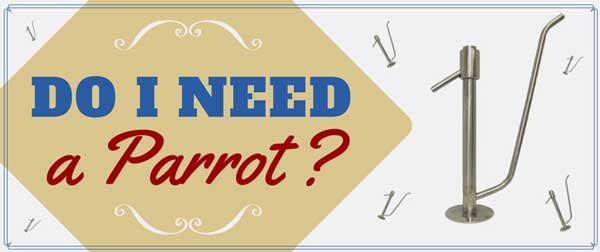Do I Need a Distiller's Parrot?

A distiller’s parrot is connected between the condenser and collection container, allowing the distillate to flow through on its way to the collection container. It’s handy because the parrot will hold your alcoholmeter, so you can take real-time readings of the alcohol percentage during the distillation process. A parrot isn’t absolutely necessary when you’re distilling, but it is an added convenience. Keep reading to learn more about distiller’s parrots and whether you need one or not.
Where Does the Distiller’s Parrot Go?
To hook it up, you just connect your collection tube to the inlet on the parrot and the reservoir will fill as distillate is produced. Then connect the outlet of the parrot your receiving container. However, to avoid any contamination from the foreshots, make sure to collect your foreshots in a separate container before attaching the parrot. Parrots easily attach to condensers on most column types whether you are using a pot distiller column, a gin series column—even a flute column. Note that our flute columns come with a built-in parrot, so you wouldn’t need to buy a separate one in that case.
What Are the Advantages of a Distiller’s Parrot?
Again, the advantage to using a parrot is that it holds the alcoholmeter, which enables you to do inline testing. Without a parrot, you would collect your distillate in a collection container and then use your alcoholmeter to test that, which is also fine. The goal is to test the alcohol percentage/proof of the distillate as you go and use that percentage as a guide (often along with temperature) to decide where to make your cuts.
Are There Any Disadvantages?
I wouldn’t exactly call it a disadvantage, but one thing worth mentioning is that you actually get slightly more accurate alcoholmeter readings without a parrot due to the constant blending of the distillate and flow of the liquid. The reason why it’s not a total disadvantage is because these differences in readings are negligible: Readings taken from the parrot are still accurate enough for determining where to make your cuts.
Whether or not you need a parrot is entirely up to you. It’s certainly convenient, but if you’re still not sure how serious you are about your hobby, I’d recommend waiting until after you complete your first couple of runs before deciding. Hobby distilling is an investment of both time and money: If you know you’re going to keep distilling for a while, you can save time by spending money on a parrot. If you’re not sure if you’re going to stick with the hobby, save your money by spending the extra time testing without a parrot.









Comments